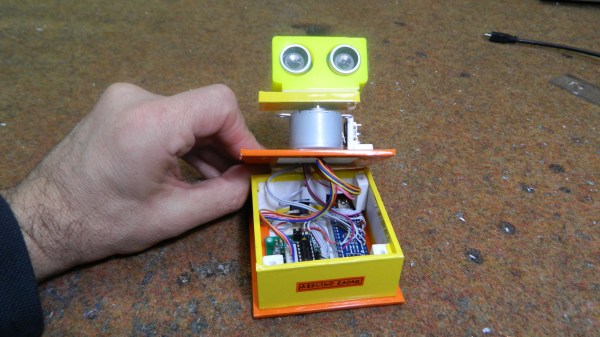This mini handheld chainsaw by [Make it Extreme] is based around an electric motor from a car door, the same ones used to raise and lower car windows. They are common salvage parts, and with the right modifications and a few spare chainsaw bits attached, it turns out that the motor is more than capable of enough zip to cut through a variety of wood. Add a cordless tool battery pack, and the portable mini handheld chainsaw is born.
 What’s really remarkable about the build video (embedded below, after the break) is not simply that it shows the build process and somehow manages to make it all look easy. No, what’s truly remarkable is that in the video it is always clear what is happening, and all without a single word being spoken. There’s no narration, no watching someone talk, just a solid build and demonstration. The principle of “show, don’t tell” is definitely taken to heart, here.
What’s really remarkable about the build video (embedded below, after the break) is not simply that it shows the build process and somehow manages to make it all look easy. No, what’s truly remarkable is that in the video it is always clear what is happening, and all without a single word being spoken. There’s no narration, no watching someone talk, just a solid build and demonstration. The principle of “show, don’t tell” is definitely taken to heart, here.
So, how well does it work as a chainsaw? It seems to work quite well! [Make it Extreme] does feel that a chain with smaller teeth and a higher motor speed would probably be an improvement, but the unit as built certainly can cut. You can judge for yourself by watching the build video, embedded below.
Continue reading “Electric Window Motor Becomes Mini Chainsaw”















